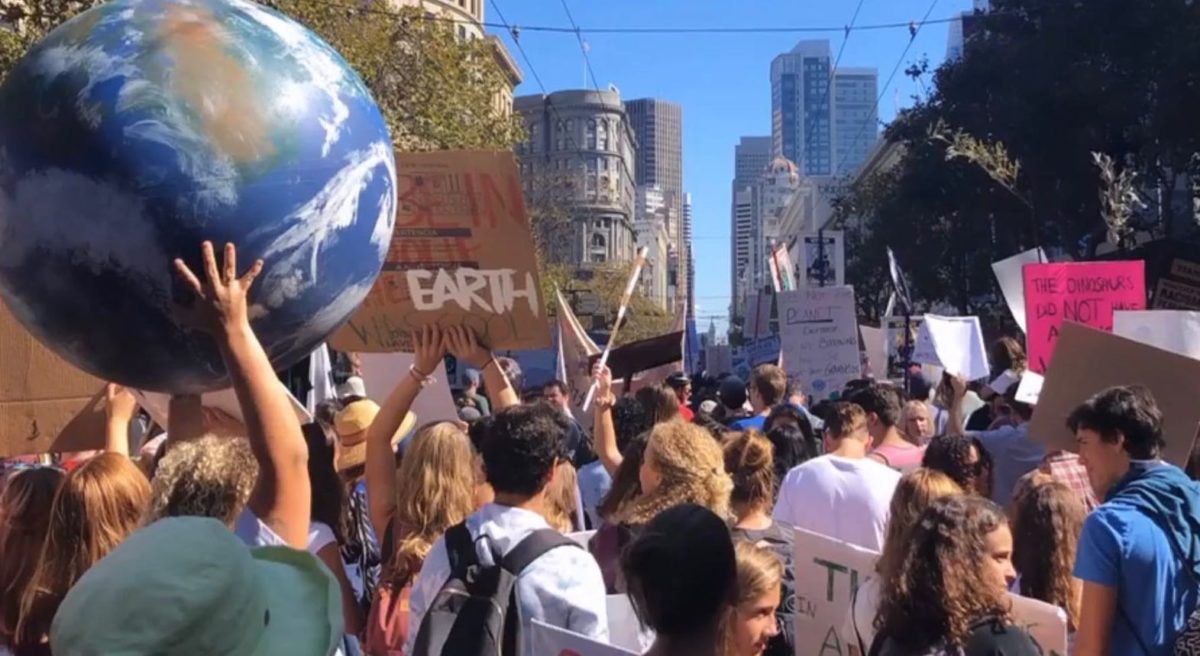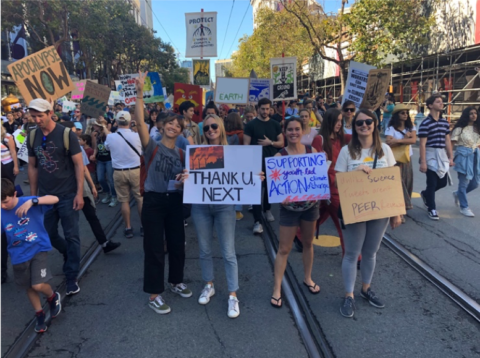
This month’s youth-led climate strikes—the protests and other events organized around the globe that collectively drew millions of marchers—represent a watershed moment: Leaders and policymakers are being pressured like never before to take meaningful action on climate change. Young people from around the world, joined by adult allies who have been working for decades to advance the transition to clean energy, are more unified than ever, and are elevating bold solutions.
I’m in my early 30s and have spent my entire professional career in the climate and clean energy space, currently at Energy Foundation, and previously at such places as the Community Food and Justice Coalition in Oakland, and the United Nations Environment Program in Paris. Never before have I seen this kind of power put forth by young voices calling for—demanding—action. As Swedish climate activist Greta Thunberg said, her generation and those that follow will profoundly pay the price of inaction. And while the spotlight is on Greta, there are young activists standing up for change here in the U.S., as well—in Arizona, California, Florida, Illinois, Massachusetts, Minnesota, New York, Texas, Washington, and Washington, D.C.

I was inspired by attending the San Francisco climate strike and march. One stop into my commute from Berkeley to the march in the city and the train was completely filled with energetic students from area middle and high schools. This unprecedented involvement and support were echoed around the country:
- The New York City school district, comprising more than 1 million students, gave permission for youth to skip school for the day to participate in the strike.
- More than 600 medical professionals signed a “doctor’s note” excusing students from school, declaring that the climate crisis is a health emergency.
- There was a “digital climate strike,” when more than 1,500 websites—including Kickstarter, WordPress, and Tumblr—went dark to support the strike.
As the day progressed in San Francisco, the march—organized by Youth vs Apocalypse—made stops at the Federal Building, Bank of America, and an Amazon Go. Strikers made demands supporting the Green New Deal and other solutions that will move us on completely from fossil fuels to clean energy.
I’m most impressed by the way young leaders are holding members of Congress accountable. For example, a couple of days before the strike, Greta Thunberg and Jamie Margolin, who at age 16 founded This is Zero Hour, responded decisively to Rep. Garret Graves’ (R-Louisiana) reasoning for why he doesn’t take action on climate change, as captured in this video. Organizations that helped lead the strikes, such as the Sunrise Movement, This Is Zero Hour, and Fridays For Future, also have put forward important solutions, including backing the Green New Deal, respecting indigenous land and sovereignty, halting deforestation, and supporting a transition that invests in prosperity for communities on the frontlines of poverty and pollution.
The strikes and marches of last week came in advance of the United Nations Climate Action Summit 2019 and have kicked off a week of direct action around the world. Strikes are planned in more than 150 countries and millions are expected to continue participating.
As I left the march on Friday, I felt more hopeful and inspired than ever about our collective ability to address the defining issue of our time. As Greta said, “We are the ones who are making the difference,” and “We need to stand together united and just never give up.”
It’s clear: We are making progress in the transition to a clean energy economy, especially as cities, states, schools, corporations, and others advance ambitious, innovative policies in the face of federal regression. But we must accelerate the pace.
I hope these young leaders will keep applying pressure—with the rest of us by their side.
